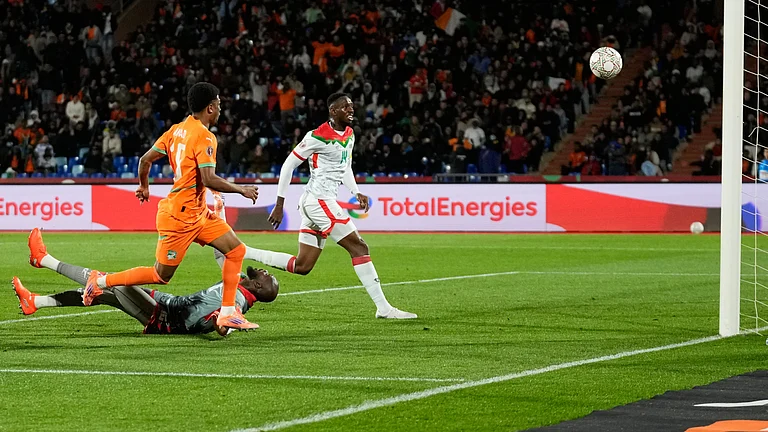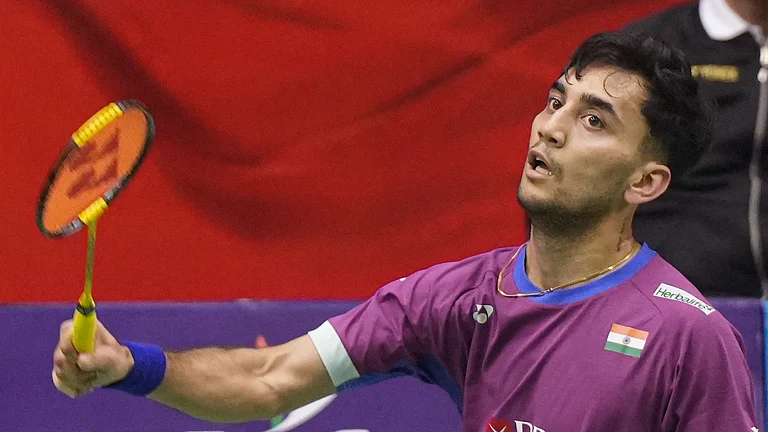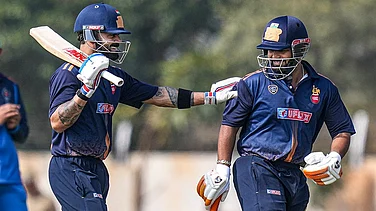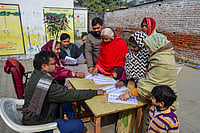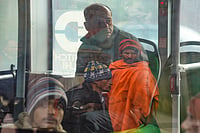I looked out from the dark pillbox which goes as a television commentary box at Eden Gardens and saw the disappointment rise in the crowd as India stumbled on the march to the World Cup final. Match abandoned: Sri Lanka win.
We know how crowd behaviour at a sporting event can turn into blanket tribalism and we each have our own memories. During the 1996 World Cup I have been carrying my diary of 1973, an account of the days when I led England in India, Sri Lanka and Pakistan. Recollections might be interesting—that was my original thought—but until the game at Calcutta I had not been drawn to quote from them.
India beat England in Calcutta on January 4, 1973. "We heard youths screaming as they were pressed against the scaffolding by a crazy crowd. The police started to whack the front row with their lath is as if it was possible for those at the front to move back. A young man's head was cut open...and this incited greater hostility. The crowd was now mad and started to throw anything at the police they could lay their hands on."
And then I could see Karachi and looked up my notes for the Test which began March 24, 1973. "Crowd riots—they set fire to the stadium and we left the field twice before going off a third time for good. The mood was bad every day. The crowds fought each other and hurled bricks, bottles, chairs and sticks—everything. Bricks tumbled around Tony Greig who was down at third man. The riot squad was called in, blue helmets and khaki uniforms. We saw the crowd break up chairs, pull the poles down which held the canvas stand-covers and stoned the police. Fires blazed. This is bloody hard." Wisden recorded: "Over a hundred minutes were lost through rioting and invasions of the field by spectators."
And lastly I had visions of Jamaica when Viv Richards was given out caught behind off Kapil Dev at Sabina Park in May 1989. Richards indicated he had not touched the ball. Immediately bottles and all sorts of hardware were flung onto the field. Jamaicans Courtney Walsh and Jeffrey Dujon went to calm the crowd. Richards himself went over to quell the riot after half an hour.
Cricketers feel Calcutta, Karachi and Kingston are volatile centres. Is that a fair judgement? How often did Sir Neville Cardus remind us that the behaviour at cricket matches, of player or spectator, only reflects the society in which they live. Can we crave Calcutta's roar without being prepared to put up with occasional rage?
Cricket is part of India's social fabric. This is its strength, the reason why youcan watch many matches going on side by side at Shivaji Park in Bombay and spot the Gavaskar or the Tendulkar of the future. India embraces overseas cricketers, offering them warmth, hero-worship and terrific passion. India embraces its own too but, by a peculiar chemical process, it also pillories them. India, like Pakistan, prefer to play away from home. Mohammed Azharuddin has filled Eden Gardens with golden memories for all who have seen him there, but his poor stroke against Sri Lanka has condemned him to the Chamber of Horrors.
It is impossible to separate the identity of an Indian cricket fan from that of the players. If India fail, the fan fails. With India's success soars the standing of the fan. Fury can come from jingoism, but mostly it's disappointment which leads to riot. Calcutta might well have been saying: "We are incensed that our cricketers have made us a loser and in front of the whole watching world, too."
The riots mentioned earlier were in Test matches, but they are more likely to occur in one-dayers in the subcontinent. In India, I sense that limited-over cricket is taking over the appeal of a Test. The World Cup is considered the pinnacle of playing possibilities. But there are two dangers. Firstly, shortening a game distorts it. In a one-dayer, fewer skills are required. It's like chess reduced to draughts. It's like playing Monopoly but dealing out the properties first to save time. In TV commentary, Tony Greig 'talks up' the ordinary occurrence, creates hype where there's none and whacks the game along at a pace which distorts the importance of the moment or lack of importance.
One-day cricket is showbiz, it has a remorseless sequence of overs running out and runs to score. They are red-nose and paper-hat time...winning the World Cup doesn't mean the top side is the best in the world. Azhar was right and so was Wasim Akram: "It is only a game." Secondly, I wonder how much betting was wrapped up at Calcutta? By stopping play, could the spectators force a replay? Betting, hype and hero-worship are a volatile cocktail. If the fans come face to face with their stars on so many advertisement hoardings, is it any wonder they identify with their glamour and, when the match is lost, castigate those whose actions do not rise up to meet their glossy profiles?
Personally, I would hate India to have the hot, thumping pulse of cricket cooled in its veins, but I do believe national outrage and an investigation into what went wrong in the crowd would serve the game well.








